Blue-and-White Arrow Quiver with Bird-and-Flower Pattern, Marked “Made in the Reign of Emperor Qianlong” | A Classic of Qing Dynasty Blue-and-White Porcelain | A Precious Oriental Collectible
[Overview of the Collection]
This is a blue-and-white arrow quiver with a bird-and-flower pattern dating back to the reign of Emperor Qianlong (1736 – 1795) in the Qing Dynasty, belonging to the classic category of Qing Dynasty blue-and-white porcelain. The quiver has a straight cylindrical shape with a slightly flared rim and a flat base. The entire body is adorned with bird-and-flower patterns painted in blue-and-white. The porcelain body is dense and delicate, and the glaze is as smooth and lustrous as jade. The blue-and-white pigment has a rich, bright, and well – layered color, showcasing the exquisite craftsmanship and aesthetic style of blue-and-white porcelain during the Qianlong period. As an antique porcelain piece with both practical and decorative functions, it embodies the artistic essence of the prosperous Qing Dynasty and serves as a precious carrier of Oriental classical aesthetics and historical culture.
[Craftsmanship Analysis]
1. The Essence of Blue-and-White
Traditional Su Ma Li Qing pigment (or its imitation in the Qing Dynasty) was used for painting. The blue color is deep and stable, with a natural halo effect. “Rust spots” can be seen on the edges of some patterns, which are typical characteristics of classic blue-and-white pigments. The brushstrokes are smooth and powerful, combining thick and thin lines. The details are delicately outlined, and the textures of bird feathers and flower petals are clearly distinguishable, reflecting the proficient skills of painters in the Qianlong era.
2. Quality of the Body and Glaze
The porcelain body is made from a “binary formula” of kaolin and porcelain stone. It is hard and delicate, and when tapped, it emits a clear and resonant sound. The glaze is a typical bluish – white glaze, evenly thick, smooth, and transparent. It forms a sharp contrast with the blue – and – white color. The white glaze is like paper, and the blue – and – white is like ink, presenting the classic beauty of “blue – and – white on a white background”.
3. Firing Technology
It was fired in a single process using a high – temperature reducing flame. The glaze has no cracks, and the body and glaze are tightly bonded. After three hundred years of passing down, it remains in good condition, demonstrating the mature firing technology of the Jingdezhen kilns in the Qing Dynasty.
[Symbolism of the Patterns]
The main pattern on the body of the quiver is a “bird – and – flower picture”, with a full yet well – layered composition:
-
Main Pattern: An old tree slants upwards from the bottom, with strong and gnarled branches. Two birds perch on the branches. One bird is pecking at food with its head down, and the other is listening intently with its head tilted. Their eyes are lively, and the feathers are well – defined, looking extremely lifelike. Large flowers are in full bloom under the tree, with overlapping petals and delicate stamens. They are likely peonies, symbolizing “wealth and good fortune”.
-
Auxiliary Patterns: Geometric patterns and intertwined lotus patterns are respectively decorated on the rim and the base. The lines are regular, forming a contrast with the freehand style of the main bird – and – flower pattern, reflecting the traditional aesthetic of “clear distinction between primary and secondary elements”.
-
Cultural Connotations: The bird – and – flower pattern is a traditional auspicious pattern in China. It symbolizes “the singing of birds and the fragrance of flowers” and “wealth and longevity”, and was a classic and beloved theme in both the imperial court and among the common people in the Qing Dynasty.
[Historical and Collectible Value]
1. Historical Background
The Qianlong period was the peak of porcelain development in the Qing Dynasty. With a strong national power, the imperial court’s demand for porcelain promoted technological innovation. On the basis of inheriting the Ming Dynasty’s techniques, blue – and – white porcelain in this period paid more attention to details and decoration, becoming a representative work of the blue – and – white porcelain of the “Kangxi, Yongzheng, and Qianlong” eras. This quiver reflects the overall style of “meticulous craftsmanship and grandeur” of blue – and – white porcelain in this period.
2. Significance of Collection
-
Rarity: The number of Qianlong blue – and – white arrow quivers in existence is limited, and intact and well – preserved pieces passed down through generations are even rarer.
-
Artistry: It integrates painting, firing, and shaping arts, presenting the traditional Oriental aesthetic.
-
Cultural Value: It bears the social culture, aesthetic concepts, and handicraft level of the Qing Dynasty in China, making it an ideal choice for cross – cultural collections.
[Condition and Dimensions]
-
Overall Condition: There are no obvious cracks or glaze peeling on the body. It retains natural traces of passing down through generations. Slight wear and tear can be seen on the rim (the yellowish – brown marks are caused by oxidation over the years), which is a normal phenomenon for antiques and does not affect its overall ornamental and collectible value.
-
Dimensions: Please refer to the picture for the specific height, rim diameter, and base diameter. For detailed data, please feel free to consult our customer service.
[Purchase and Maintenance Notes]
-
Authenticity Guarantee: A professional appraisal report is attached (please contact our customer service for details).
-
Maintenance Suggestions: Avoid violent collisions. Store it in an environment with stable temperature and humidity (temperature: 15 – 25°C, humidity: 50 – 60%). Clean it gently with a soft cloth and do not use chemical cleaners.
-
Purchase Notes: Due to the special nature of antiques, they are non – refundable after sale. We offer worldwide insured shipping. Please feel free to consult us in advance for details.
VirtuCasa is committed to presenting Oriental art treasures to collectors around the world. Each antique is carefully selected to inherit history and connect cultures.
The pictures are taken of the actual item. Slight color differences may occur due to lighting, so please refer to the actual item.
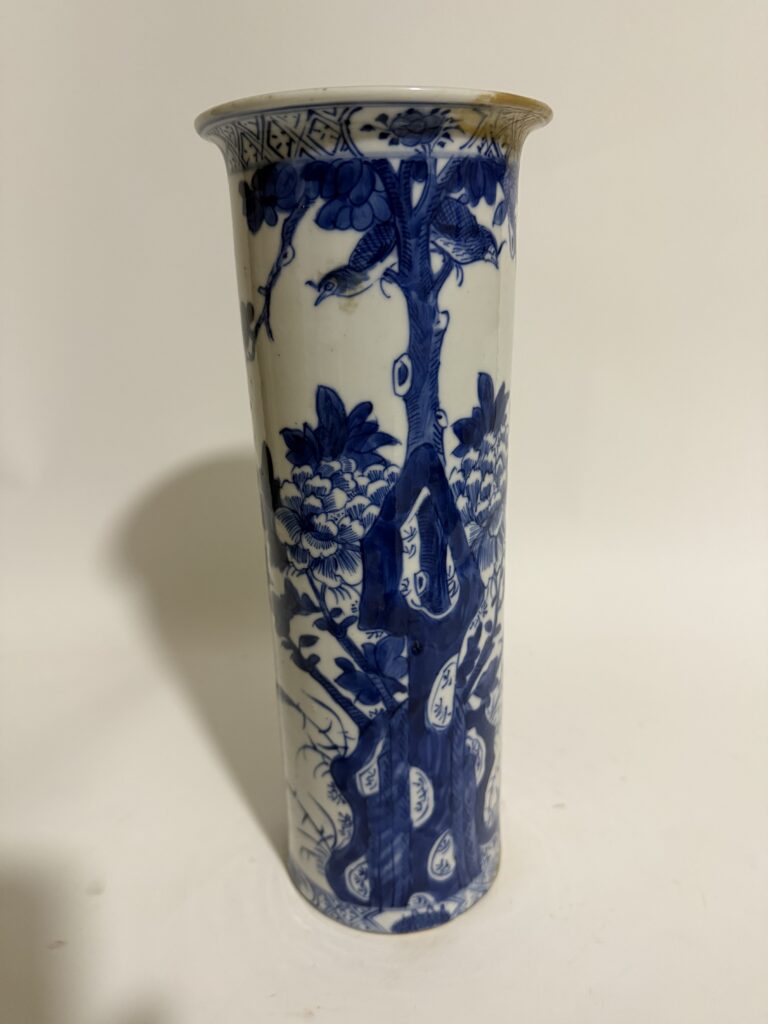
乾隆年制青花花鳥紋箭筒|清代青花經典|東方收藏珍品
【藏品概述】
本品為清代乾隆年間(1736-1795)青花花鳥紋箭筒,屬清代經典青花瓷器品類。器形呈直筒狀,口沿微敞,底足平整,通體以青花繪製花鳥圖案,胎質堅密細膩,釉面瑩潤如玉,青花发色濃艷明快,層次分明,展現乾隆時期青花瓷器的精湛工藝與審美風格。作為兼具實用與陳設功能的古董瓷器,本品承載清代盛世的藝術精髓,是東方古典美學與歷史文化的珍貴載體。
【工藝解析】
1. 青花精髓
採用傳統蘇麻離青料(或清代仿蘇料)繪製,青花呈色深藍穩重,帶有自然暈散效果,部分紋飾邊緣可見「鐵鏽斑」特徵,為經典青花料的典型表現。筆觸流暢有力,線條粗細結合,細部勾勒精緻,如鳥羽、花瓣紋理均清晰可辨,體現乾隆朝畫師的嫻熟技藝。
2. 胎釉品質
胎土選用高嶺土與瓷石混合「二元配方」,胎體堅硬細緻,叩之聲音清越。釉面為典型青白釉,厚薄均勻,瑩潤透亮,與青花色彩形成鮮明對比,白釉如紙,青花似墨,呈現「白地青花」的經典美感。
3. 燒制技術
經過高溫還原焰一次性燒成,釉面無開片,胎釉結合緊密,歷經三百年傳世仍保持完好,展現清代景德鎮窯場成熟的燒制工藝。
【紋飾寓意】
器身主紋為「花鳥圖」,構圖飽滿而不失層次:
-
主體紋飾:一株老樹自底部斜伸而上,枝幹遒勁,枝頭棲息雙鳥,一鳥低頭啄食,一鳥側耳傾聽,眼神靈動,羽毛層次分明,栩栩如生;樹下盛開大朵花卉,花瓣層疊,花蕊細膩,應為象徵「富貴吉祥」的牡丹。
-
輔助紋飾:口沿與底足分飾幾何紋與纏枝蓮紋,線條規整,與主體花鳥的寫意風格形成對比,體現「主次分明」的傳統審美。
-
文化內涵:花鳥紋為中國傳統吉祥紋飾,「鳥語花香」寓意生機勃勃、富貴長春,是清代宮廷與民間皆喜愛的經典題材。
【歷史與收藏價值】
1. 時代背景
乾隆年間為清代瓷器發展的巔峰時期,國力強盛,宮廷對瓷器的需求推動工藝創新,青花瓷器在傳承明代技術基礎上,更注重細節與裝飾性,成為「康雍乾」三代青花的代表作。本品體現該時期青花瓷器「精工細作、雍容華貴」的總體風格。
2. 收藏意義
-
稀缺性:乾隆青花箭筒存世量有限,尤其完整傳世品更為難得;
-
藝術性:融合繪畫、燒制、造型藝術於一體,展現東方傳統審美;
-
文化性:承載中國清代社會文化、審美觀念與手工藝水平,是跨文化收藏的理想選擇。
【品相與尺寸】
-
整體狀況:器身無明顯裂紋、剝釉,保留自然傳世痕迹,口沿可見輕微使用磨損(黃褐色痕迹為歲月氧化所致),屬古董正常現象,不影響整體觀賞與收藏價值。
-
尺寸參考:具體高度、口徑、底徑請參考圖片比例,詳細數據歡迎諮詢客服。
【收購與保養須知】
-
真偽保障:本品為清代傳世古董,附專業鑒定意見(詳情請聯繫客服索取);
-
保養建議:避免劇烈碰撞,存放於溫濕度穩定環境(溫度15-25℃,濕度50-60%),清潔時用軟布輕拭,禁用化學清潔劑;
-
購買須知:古董商品特殊性質,售後不退換,全球包郵(保險運輸),歡迎提前諮詢細節。
VirtuCasa 致力于为全球藏家呈现东方艺术瑰宝,每件古董均經嚴格篩選,傳承歷史,連接文化。
圖片為實物拍攝,因光線差異可能存在輕微色差,請以實物為準

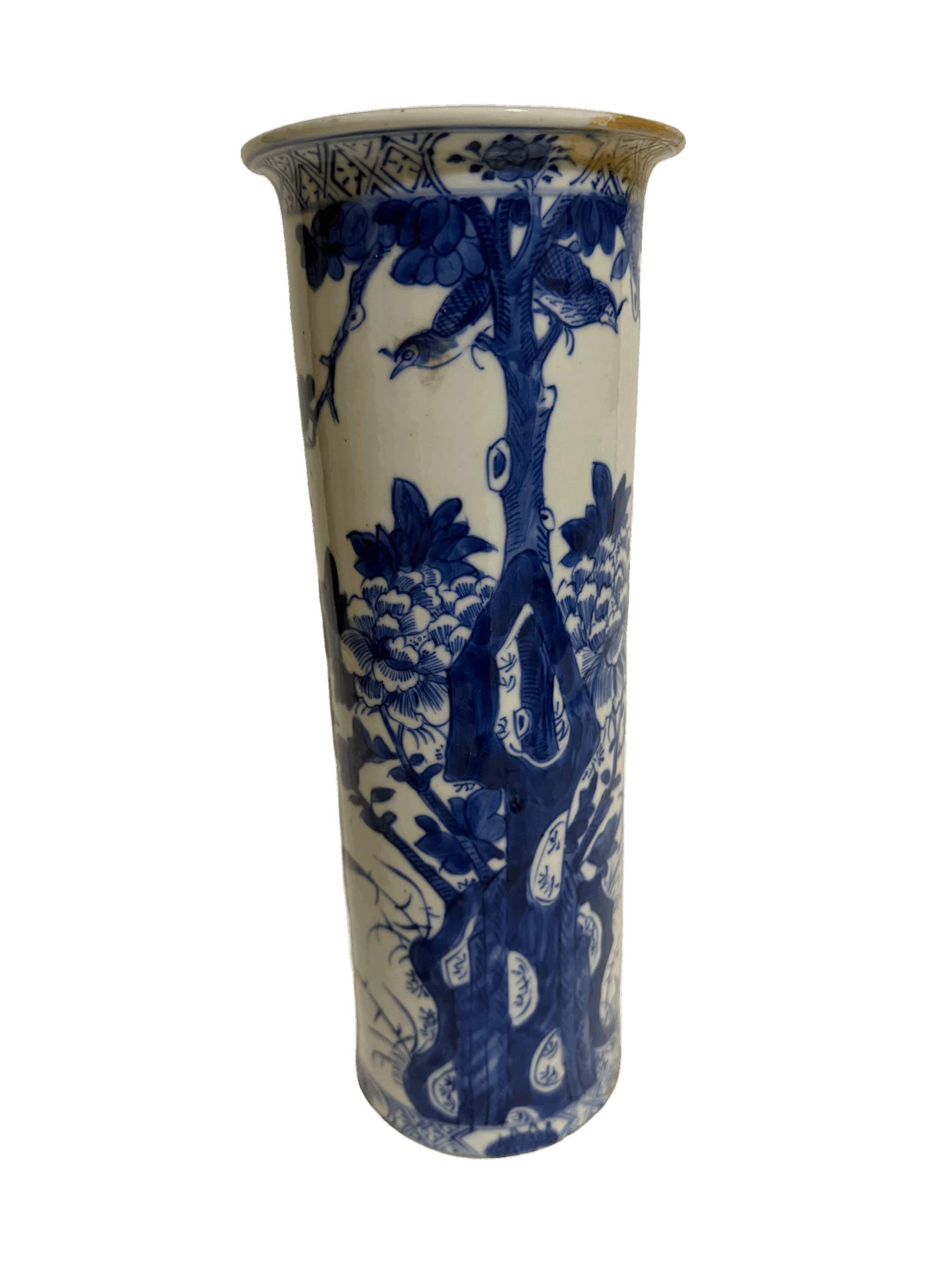
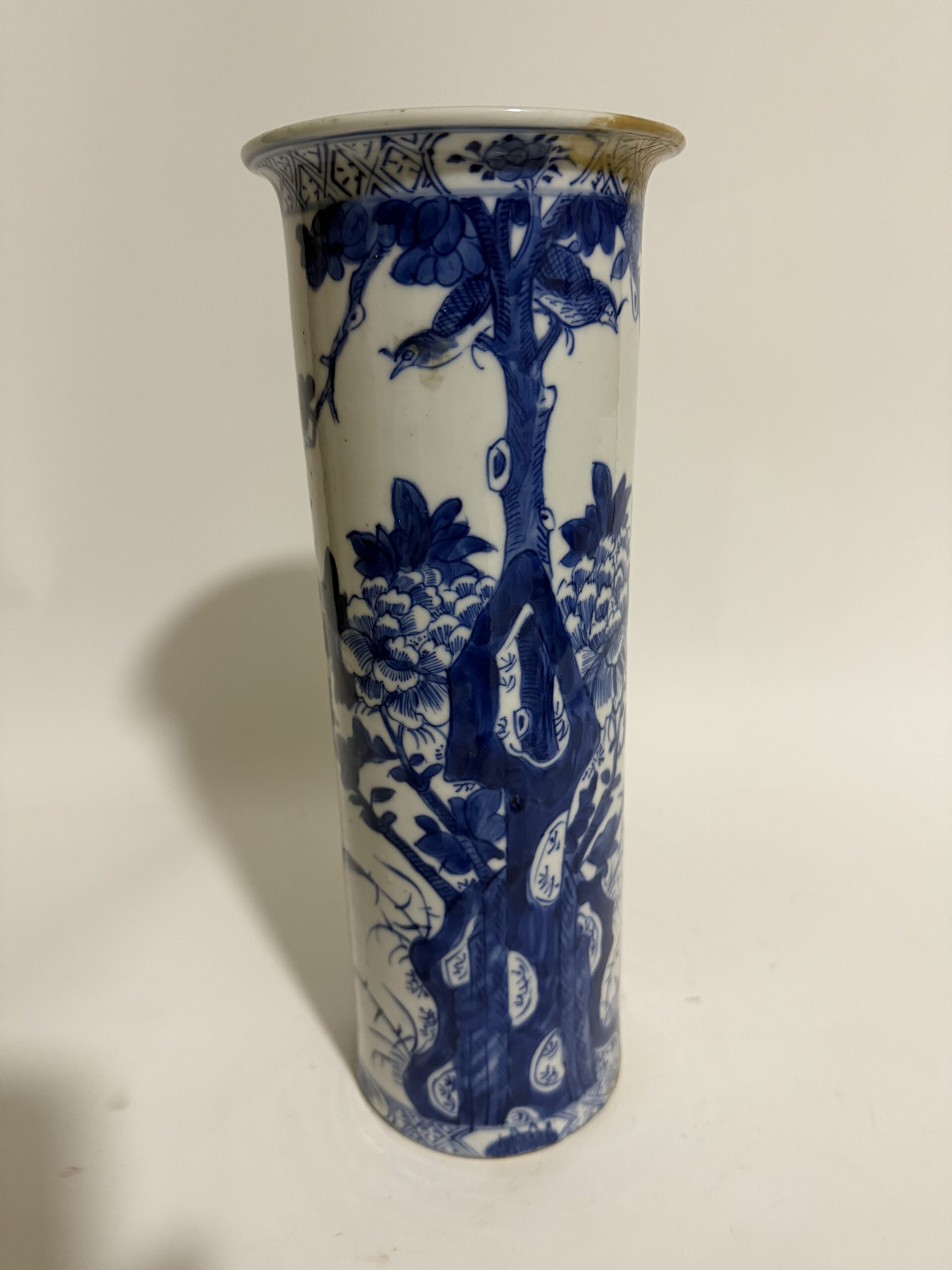
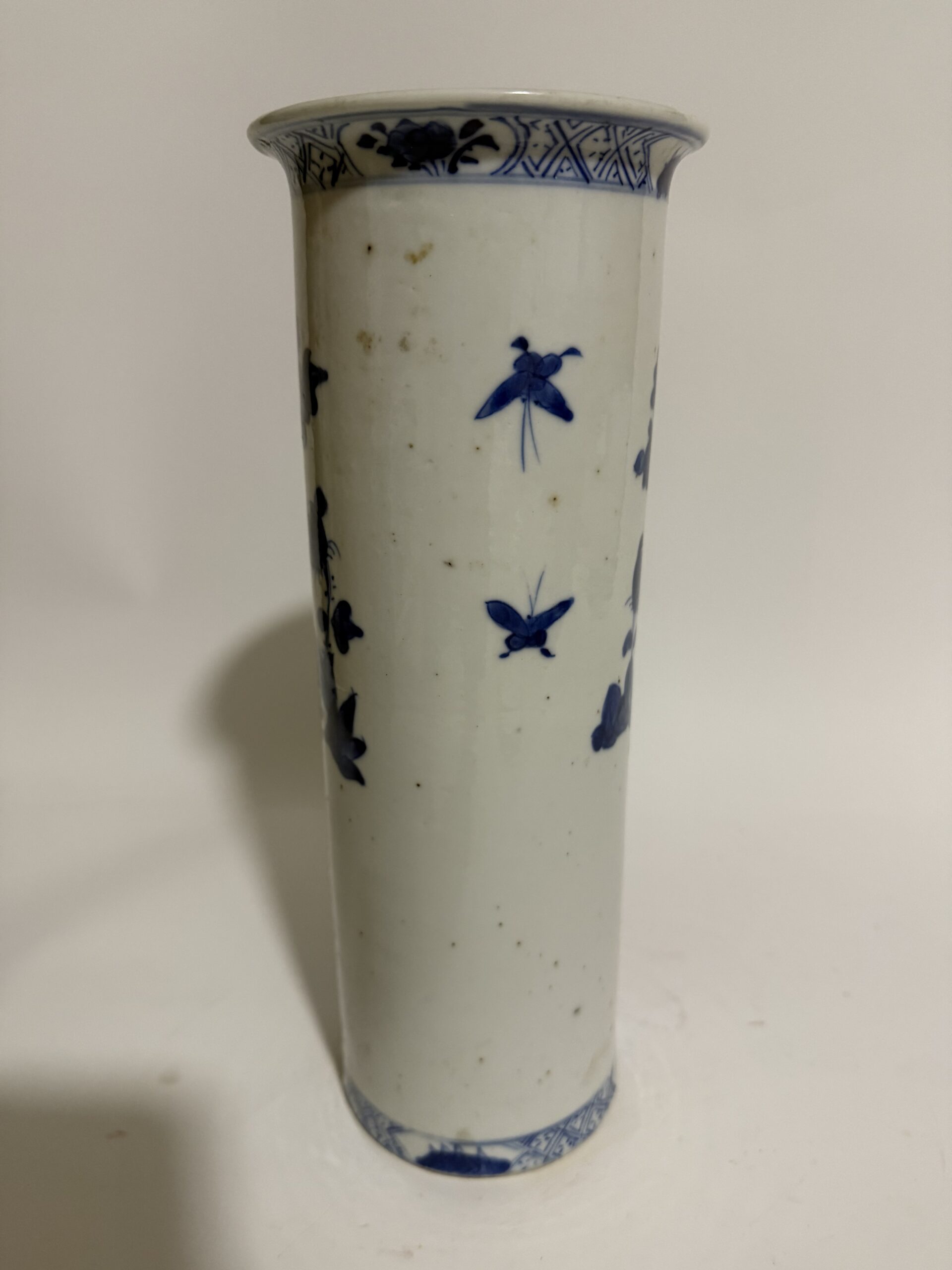
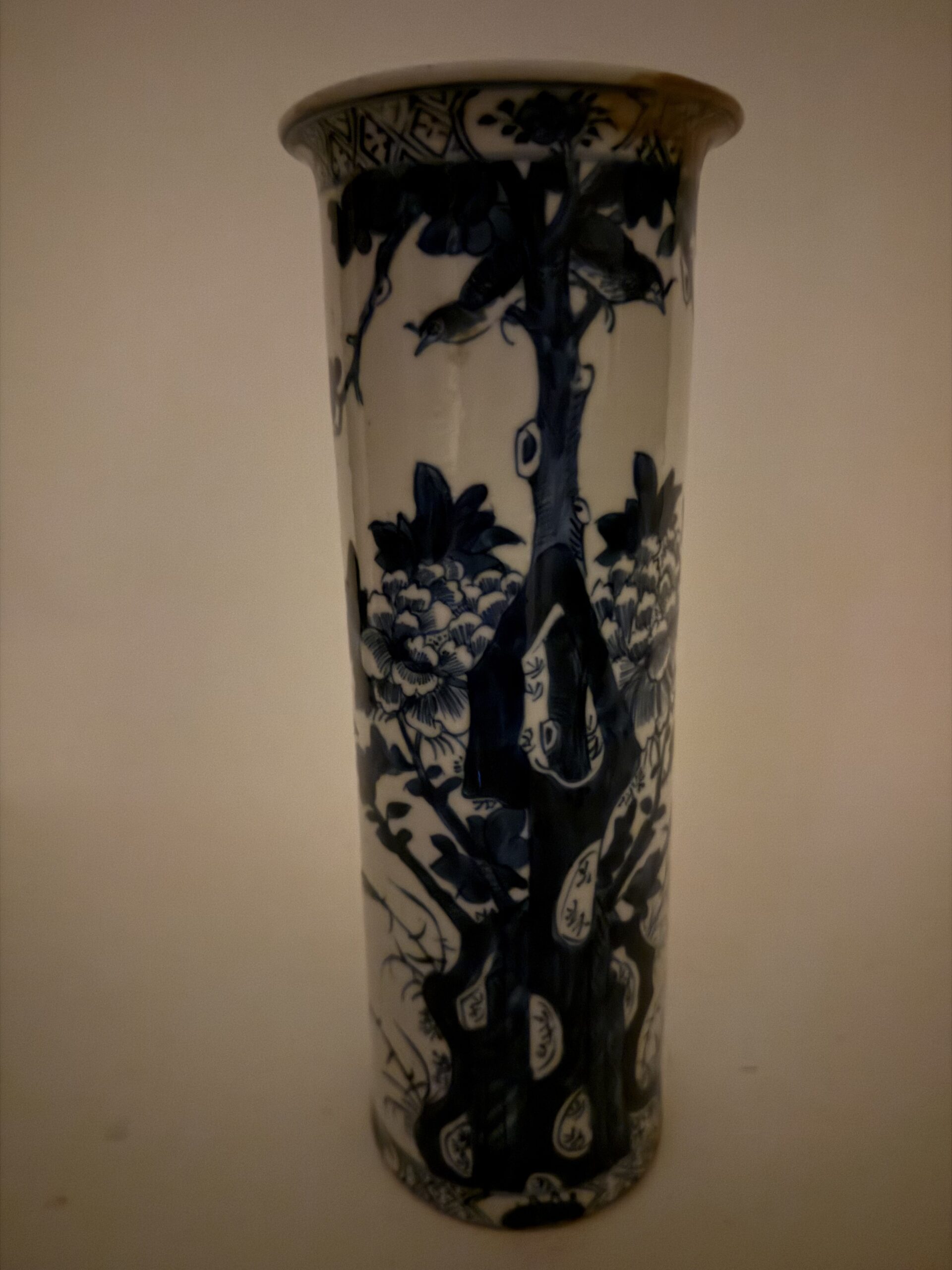
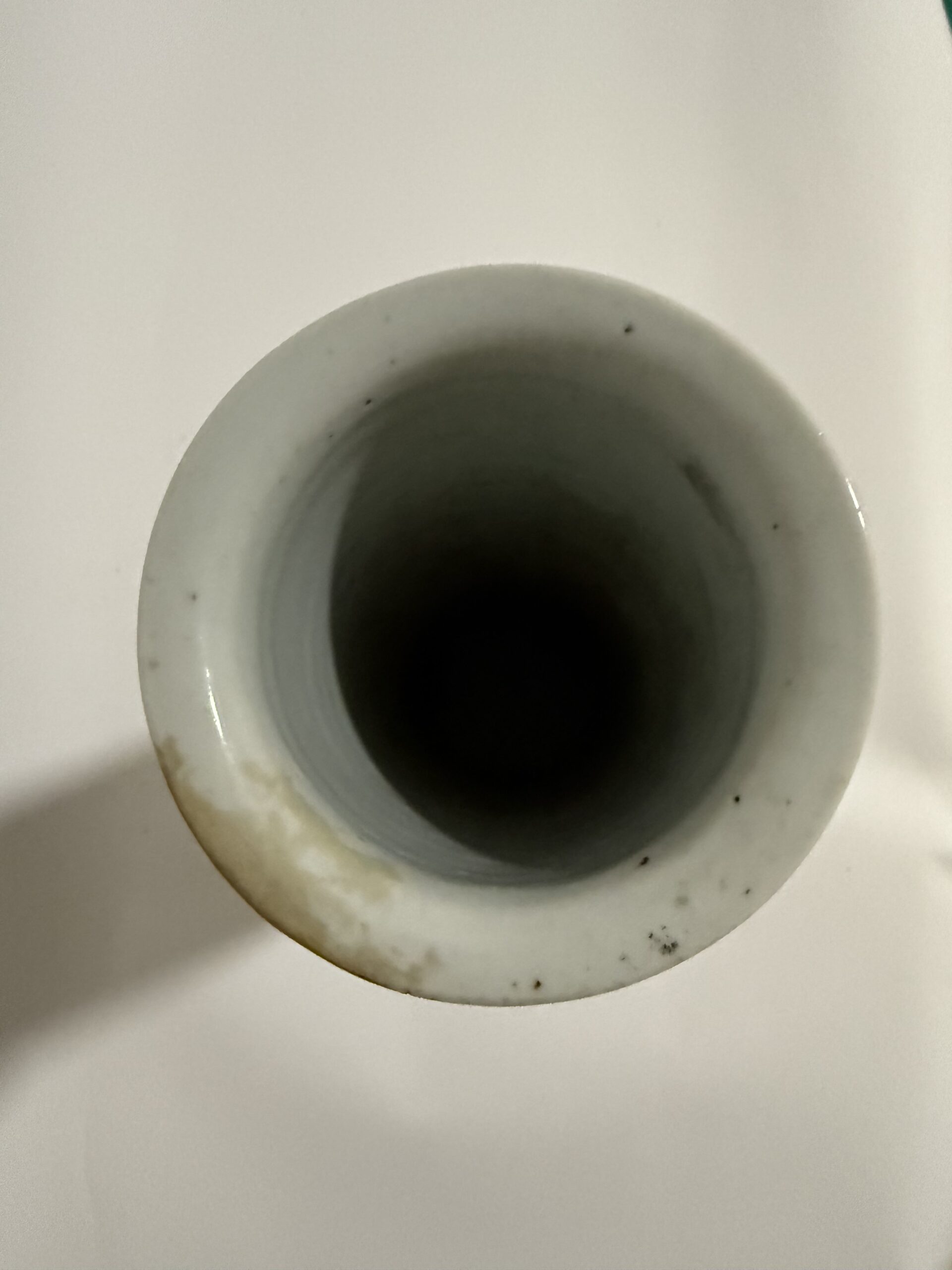
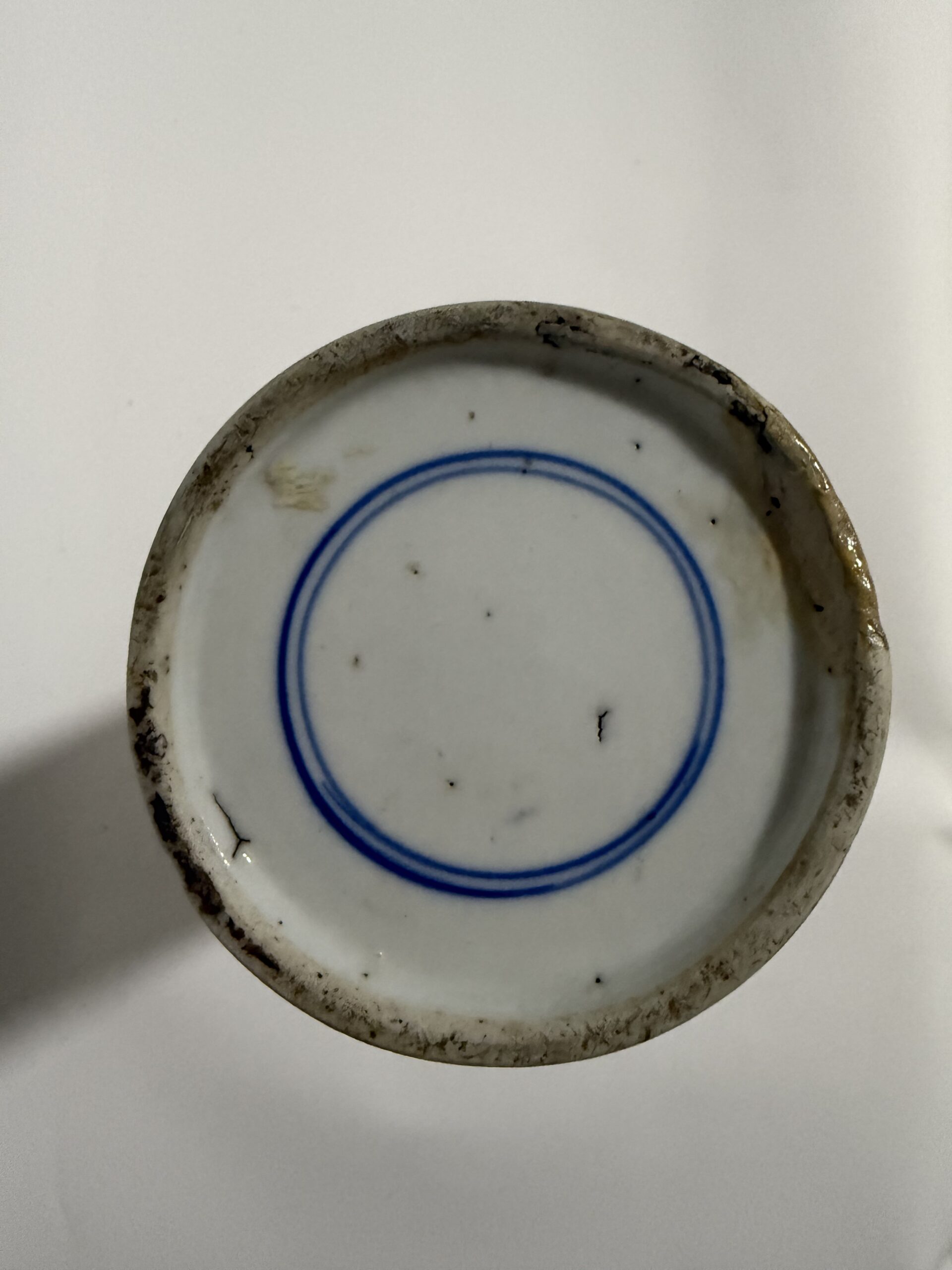

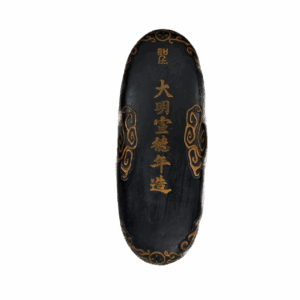
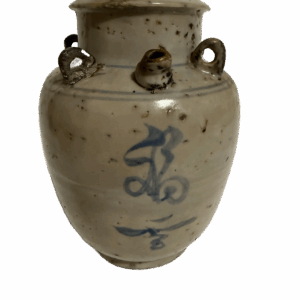
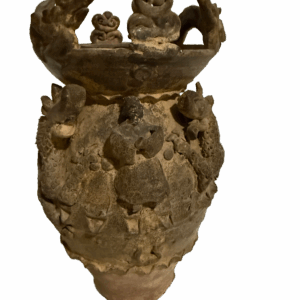
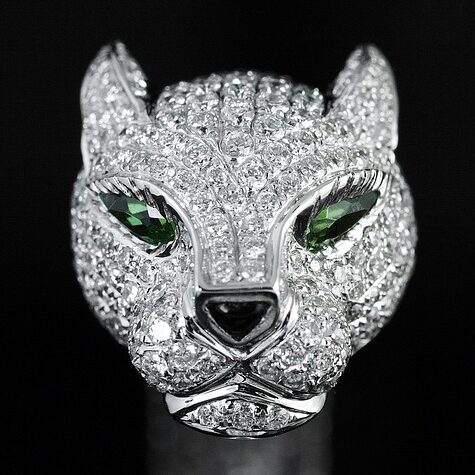
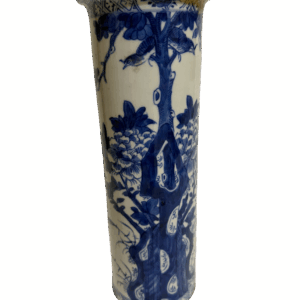
Reviews
There are no reviews yet.